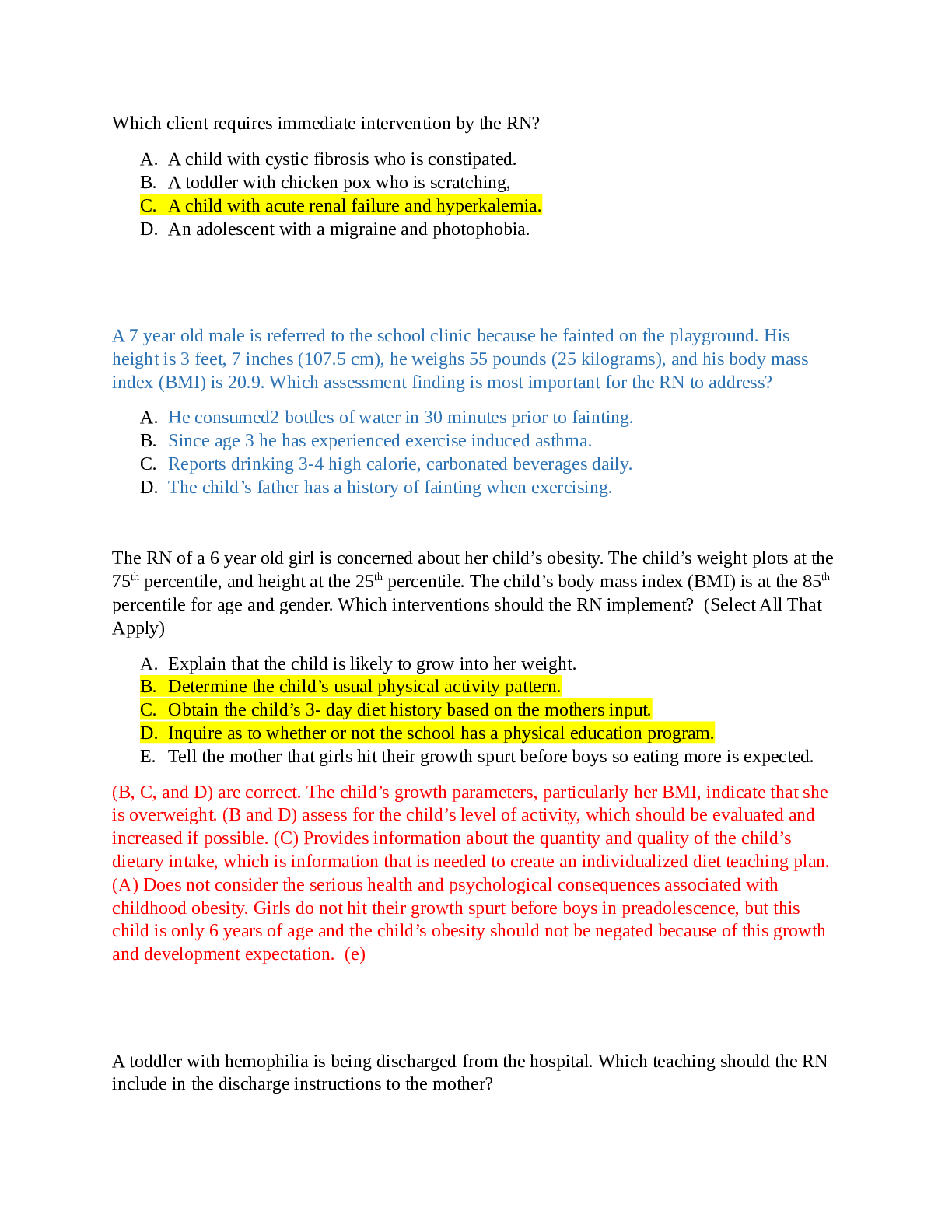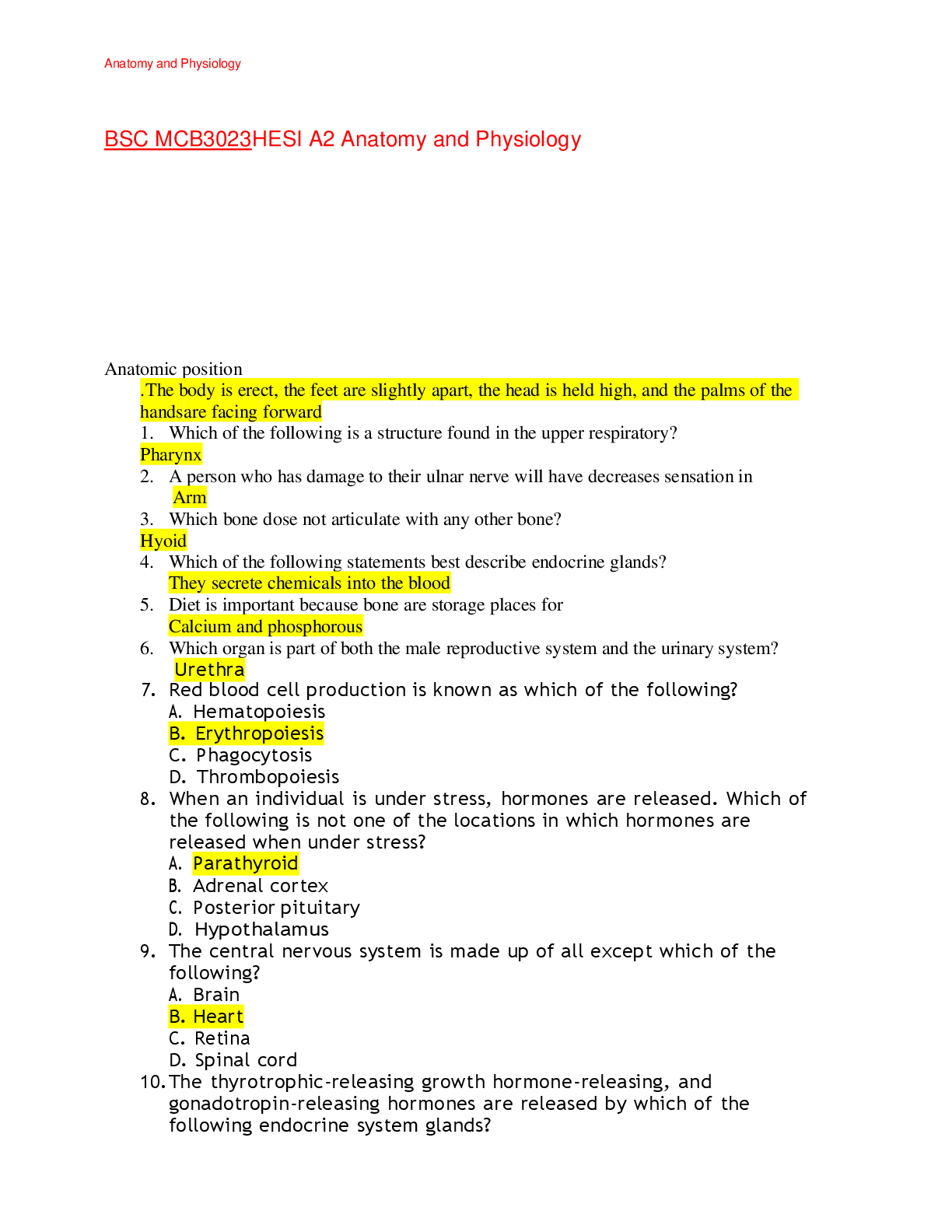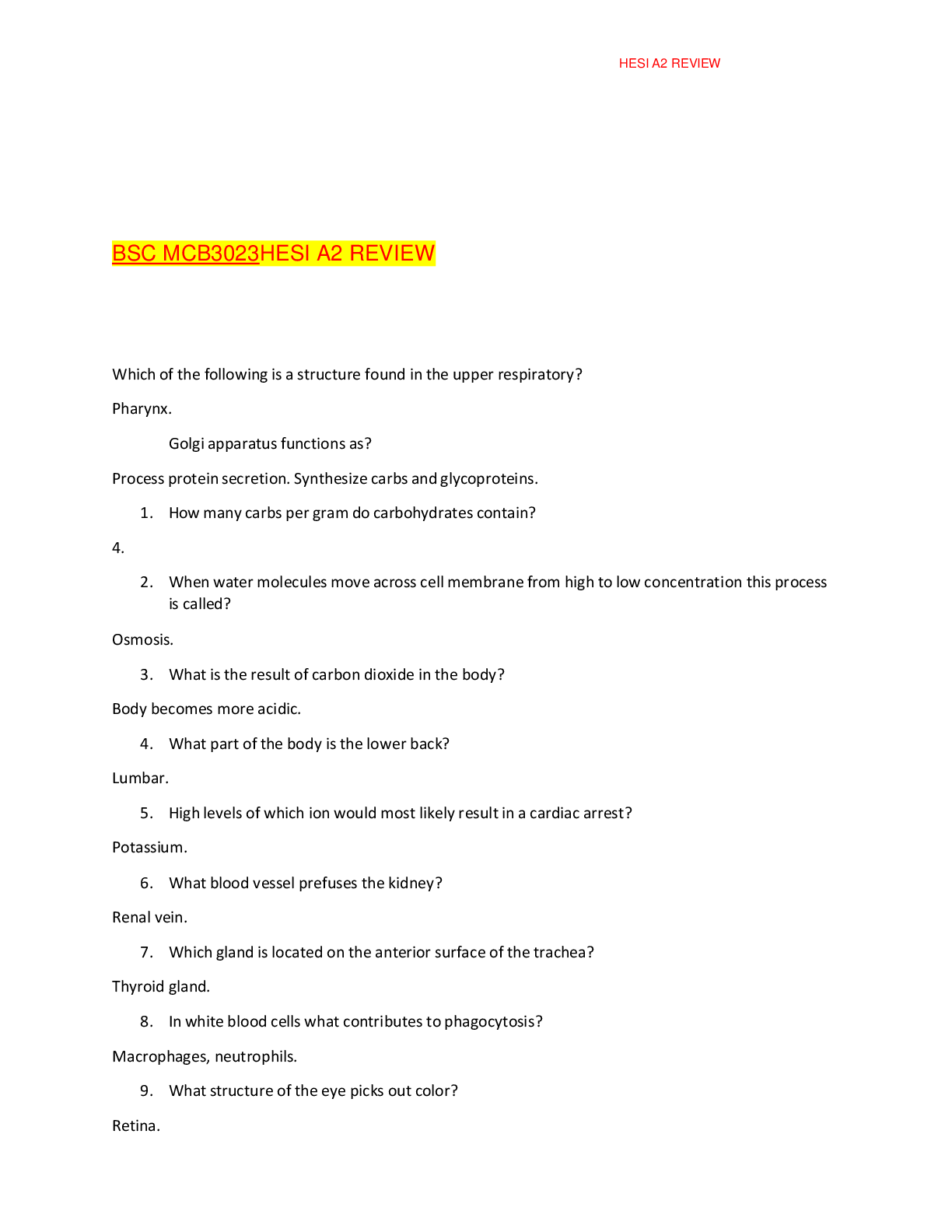OB Hesi questions with all the correct answers
Document Content and Description Below
1. A primipara has delivered a stillborn fetus at 30-weeks gestation. To assist the parents with the grieving process, which intervention is most important for the nurse to implement? Provide an op ... portunity for the parents to hold their infant in privacy 2. A one-day-old neonate develops a cephalhematoma. The nurse should closely assess this neonate for which common complication? Jaundice 3. What is the most important assessment for the nurse to conduct following the administration of epidural anesthesia to a client who is at 40-weeks gestation? KNOW TYPES OF ANESTHESIA Maternal blood pressure 4. The nurse is caring for a female client, a primigravida, with preeclampsia. Findings include +2 proteinuria, BP 172/112 mmHg, facial and hand swelling, complaints of blurry vision and a severe frontal headache. Which medication should the nurse anticipate for this client? Mag Sulfate 6. A client at 35 weeks gestation complains of a “pain whenever the baby moves.” On assessment, the nurse notes the client’s temperature to be 101.2 F, with severe abdominal or uterine tenderness on palpation. The nurse knows that these findings are indicative of what condition? Chorioamnionitis 7. While caring for a laboring client on continuous fetal monitoring, the nurse notes a fetal heart rate pattern that falls and rises abruptly with a “v” shaped appearance. What action should the nurse take first? Change maternal position (for U shaped too) 8. The parents of a newborn tell the nurse that their newborn is already trying to walk. How should the nurse respond? Explain the newborns normal stepping reflex 9. The nurse is conducting postpartum teaching with a mother who is breastfeeding her infant. When discussing birth control, which method should the nurse recommend to this client as best for her to use in preventing an unwanted pregnancy? Condoms and contraceptive foam or gel 10. The nurse is planning discharge teaching for a client who had an evacuation of gestational trophoblastic disease (GTD) two days ago. Which information is most important for the nurse to include in this client’s teaching plan? OCP at least one year 11. The nurse places one hand above the symphysis while massaging the fundus of a multiparous client whose uterine tone is boggy 15 minutes after delivering a 7 pound 10 ounce infant. Which information should the nurse provide the client about this finding? Both lower uterine segment and fundus need to be massaged 12. A primigravida arrives at the observation unit of the maternity unit because thinks is in labor. The nurse applies the external fetal heart monitor and determines that the fetal heart rate is 140 beats/minute and the contractions are occurring irregularly every 10 to 15 minutes. What assessment finding confirms to the nurse that the client is not labor at this time? Contractions decrease with walking 13. A client delivers a viable infant, but begins to have excessive uncontrolled vaginal bleeding after the IV Pitocin is infused. When notifying the healthcare provider of the client’s condition, what information is most important for the nurse to provide? Maternal blood pressure 14. The current vital signs for a primipara who delivered vaginally during the previous shift are: temperature 100.4 F, heart rate 58 beats/minute, respiratory rate 16 breaths/minute, and blood pressure 130/74. What action should the nurse implement? Document vital signs in record (normal) 15. A 4-day postpartum client calls the clinic and reports that her nipples are so sore that she does not know if she can continue to breastfeed her infant. What instruction is best for the nurse to provide? Apply hot packs before just before each feeding 16. An infant is placed in a radiant warmer immediately after birth. At one hour of age, the nurse finds the infant to be jittery, tachypneic, and hypotonic. What is the first action that the nurse should take? Determine infants blood sugar level 17. A 36-week primigravida is admitted to labor and delivery with severe abdominal pain and bright red vaginal bleeding. Her abdomen is rigid and tender to touch. The fetal heart rate (FHR) is 90 beats/minute, and the maternal heart rate is 120 beats/minute. What action should the nurse implement first? Notify healthcare provider at patients’ bedside [Show More]
Last updated: 3 years ago
Preview 1 out of 4 pages

Buy this document to get the full access instantly
Instant Download Access after purchase
Buy NowInstant download
We Accept:

Reviews( 0 )
$9.00
Can't find what you want? Try our AI powered Search
Document information
Connected school, study & course
About the document
Uploaded On
Mar 24, 2021
Number of pages
4
Written in
All
Additional information
This document has been written for:
Uploaded
Mar 24, 2021
Downloads
0
Views
206

.png)








.png)












